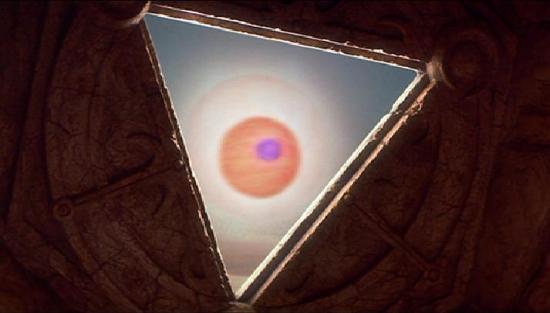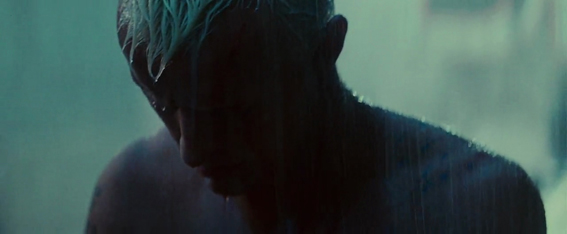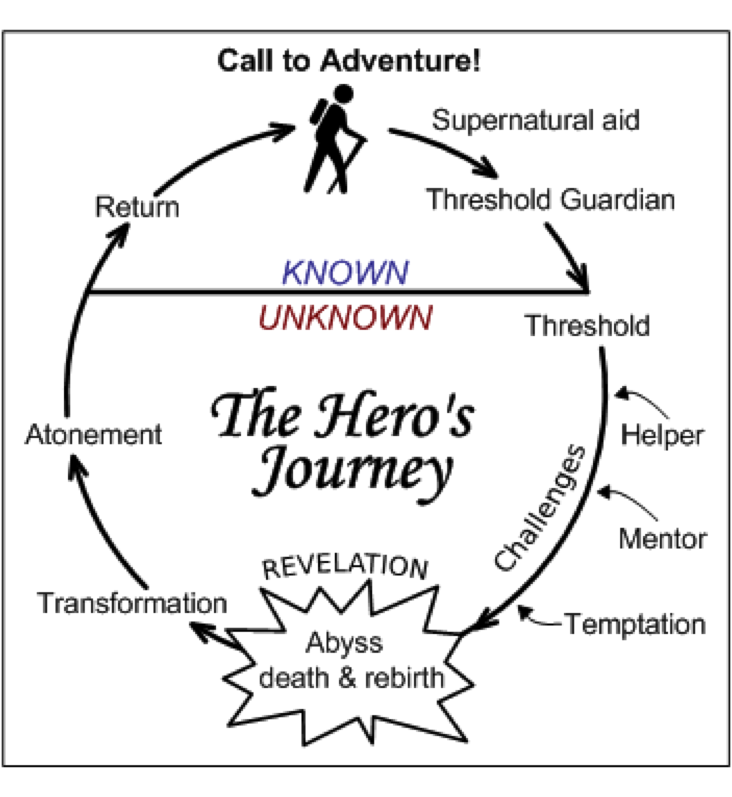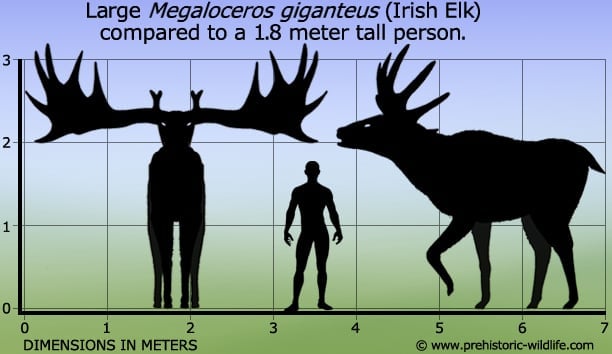Frostburn
Mastering the Perils of Ice and Snow

Frost giants versus knights riding fucking moosicorns. Fuck yes!
Dungeons & Dragons 3rd edition, more than anything else, attempted unify the core game mechanic to the point where you could easily - almost systematically - generate content, and then worked to capitalize by generating said content. Because basically anybody could generate that content, that meant that for the official products to sell, the content needed to be better.
Often, it wasn't. It was more official than better. But Wizards of the Coast still set the terms and the rules of the game. They started out by expanding player space in terms of classes (from Sword & Fist through to the Complete books), and races (Races of Stone, &c.), but then they hit on the idea of focusing on where you were going adventuring instead of necessarily who was going adventuring.
Let's be honest, this is really weird territory for D&D. 3rd edition had no default setting, aside from some very slight nods to Greyhawk. It was trying to be a generic fantasy system, but none of the pieces were supposed to be specific to any given world. As a result, it's more like a half-assed class-based broken version of GURPS than it is something like Earthdawn.
So, Frostburn is nominally the book that covers going out where it's cold. Ithaqua weather. Boots and mittens.
Dungeons & Dragons is the original elf game. You play as your character, and your character can be anything you can imagine, so long as you imagine a Dwarf Cleric named Carlos. So expanding Dungeons & Dragons has always been a bit of a contradiction. Players can already do whatever they want in the game, but at the same time they have to play a Dwarf Cleric named Carlos. What do you get for the guy who has everything? Or rather, what do you get for the guy who could have had anything, but genuinely actually has a Dwarf Cleric named Carlos?
In most editions the answer has been to pick some aspect of character generation and double down on new options for players who go that route. The Complete Book of Dwarves has more stuff if your character is a Dwarf. Defenders of the Faith has more stuff if your character is a Cleric. They never did the Carlonomicon to add more options for characters named Carlos, but they were sorely tempted. In 4th edition, that was going to be considered a core rulebook before it got yanked from the release schedule.
A big problem with these kinds of expansion books of course is that they don't appeal to the whole market. What if you're playing an Elf in your elf game instead of a Dwarf? Would you still care about reading Races of Stone? What if you're playing a Ranger in your elf game? Would you still care about reading Divine Power? There are few characters who are multinamed in such a way that they can benefit from the material in both the Carlonomicon and Open Mike. I don't have access to sales figures from 3rd edition, but they did mention once how many copies of various things got sold back in the nineties and the dropoff between a book of general interest like the Player's Handbook and a book that was of more restricted utility such as the Complete Book of Halflings and Gnomes was pretty severe. And yet, if you made all your expansion books truly general, how the everliving fuck would you find anything? Books still have to have themes and hooks to get people to read them in the first place and to remember their contents.
Right about the end of 3rd edition, someone came up with the idea of expansion books tied to adventuring idiom rather than to character generation selections. Specifically a book about things being cold. So there's material for Elves and Dwarves; there's material for Warriors and Wizards; there's material for characters named Carlos or Susan. There's even stuff for Mister Cavern like monsters and traps. But it's all ice themed. Like ice ages or Vikings or the White Witch has come to town, fucking whatever. It's cold outside, and it's time to do some adventuring.
The first fucking problem you have with this book is that it deals with a problem that D&D has traditionally been bad at: survival.
Surviving in different environments can be relatively difficult and is quite honestly largely a lost set of skills for 99% of the D&D audience. You may have been camping, but you probably didn't start a fire with flint & steel, you likely didn't hunt down game with melee weapons, and odds are you had some kind of portable shelter with you and some kind of conveyance to take you to and from the "wilderness." Humanity has spent a good bit of time trying to get away from guessing which berry is edible and which will have you rushing for the bushes every twenty minutes as you slowly die from dehydration.
Which is why in D&D 3.x, Survival is...a skill. Like, a singular skill. You don't even need to roll individually, you have one person with the highest Survival skill and get them to roll for the group and trust to the Dice Gods that some of you make it through the wilderness to wherever you are going.
Survival in D&D is almost inherently a points-of-light thing. Or something Mister Cavern conveniently ignores because he needs the group to get from point A to point B without dying because they drank from a stagnant pool along the way.
This is usually the point that the simulationists come in and demand things be more realistic, that survival should be more of a challenge, to reward those players who properly prepare their characters as though this were a contest of wits and skill rather than the roll of the dice. Weather tables start getting written. Pitons are added to equipment lists.
Now you're not playing Dungeons & Dragons anymore. You're playing fucking Dungeon Scouts.
Frostburn came out almost a year after the release of the 3.5 Dungeons & Dragons revision, and I'm pretty sure that means the book was stuck in development hell for a bit over a year because of that revision. Frostburn calls out all the books it references, and they are all pre-revision 3rd edition books. It even calls out the writers of the “new edition” and it's the authors of the 3rd edition Player's Handbook, not the chucklefucks who rewrote it for 3.5. Frostburn has been “updated” to the 3.5 revision rules according to the title page, but there's definitely something 3rd editiony about a lot of the writing. And I in no way am saying that as a bad thing. Still, this book is monstrous compared to other 3rd edition sourcebooks. It's 224 pages long, and only a small amount of that can be blamed on the general text bloat caused by adapting 3.5 D&D text block standards.
How long was this book kept in development hell? At least a year, but probably more than that. Little things like referring to the edition of D&D that came out in 2000 as “new” suggest that at least one of the three main authors of this book were working on it for a long time before it went to print. Some of the texts kind of read like they were merged drafts that had been worked on with a lot of time between sessions. I'm pretty familiar with how text reads when that has happened. Since, you know, that's a thing I've done a bunch of times. In any case, the last referenced book came out in March of 2003, and that is 18 months before this book actually went to print.
Why was it in development hell for so long? Well, some of that was the simple daunting task of going through a 224 page document and replacing every mention of “Wilderness Lore” with “Survival.” I know that would make me want to kill myself. But honestly, I think it's pretty safe to surmise that it was mostly held up over inane arguments about trivial bullshit that you couldn't imagine giving a shit about even at the time. I talked to a bunch of the Wizards of the Coast guys in 2004, and holy shit did they have strange ideas about what was and was not important. They thought it was super important to compare every proposed 1st level spell to magic missile and of course Andy Collins made almost all of his changes to 3.5 in order that his Dwarf Fighter named Carlos would get more benefit from the Power Attack maneuver than an Elvish Ranger in his gaming group. I would be willing to bet real money that the book was held up for over a month over some nerd tantrum that even Frank Fucking Trollman couldn't summon the nerd cred to give two shits about either way.
The bottom line is: lower your fucking expectations for this one. It was never going to be good. You could have scraped all the monsters and spells with the [cold] descriptor into a single document and hired a single GURPS writer to write some skein of connective tissue tying them all together and you would have gotten better than this.
And I say that mostly because of all the stuff you might expect in this book, only about half of it is actually in here. Seriously. You've got 11 basic classes in the core book. The bare minimum you would expect is that each of them get some icy love in this book, and it doesn't happen.
Introduction

The introduction is only one page and it sets itself only two tasks. The first is to tell me what is in each of the seven chapters and appendix of this book, which it does tolerably OK. I now know that “Chapter 4: Equipment” has various arctic exploration gear in it. I might have guessed that based wholly on the title, but it's nice to have confirmation. The other thing it wants to do is to get me to buy in to the idea that we should call all distinctively cold adventuring locations “The Frostfell.” in the same way and to the same degree that sometimes we refer to subterranean adventuring locales collectively as “The Underdark..” That is a harder sell and this introduction doesn't manage it.
Sure, it tells me that they intend to use words this way, I'm just not going to do it. It's sixteen years later and I have never once referred to a white dragon's ice cave lair as “The Frostfell” and I think if I tried to do that that people would be really confused. I'm not sure that having a generic collective term for any adventuring location where your breath makes little clouds is necessary or even helpful, but if you decided that you did want such a term, “Frostfell” isn't great.
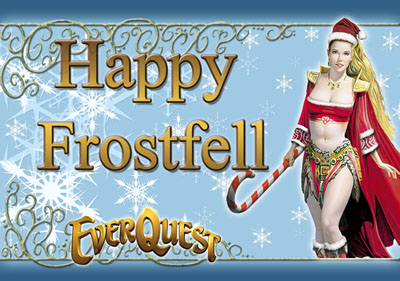
Frostfell is also the in-world name of Christmas in Everquest, which is equally as bullshit.
A “fell” is an elevated land area that isn't covered in trees or sown with grain. That's just what the word means. A glacier covered mountain could well be frosty and a fell, and by the laws of unimaginative fantasy location names it could well be called “Frostfell.” But a frozen lake or a snow covered forest or an ice cave or whatever is not a fell. Calling it “Frostfell” is bullshit.
Paragraph two is about where the book jumps its first shark.
See, this isn't normal survival. Oh no, we're going to be dealing with magical ice and snow and shit. The laws of fucking physics are right out the window my fucking friend, and your homedwarf Carlos had better pray his beard doesn't freeze right the fuck off. Because stranger things are known to happen. We aren't that far removed from the Paraelemental Plane of Ice. Which they decided to completely eliminate from this book, but which not everybody quite got the memo on.
So, there are no ice elementals in this book. That's not necessarily a bad thing; you don't need ice elementals just like you don't need plasma elementals or tombstone elementals or shadow elementals. But they also didn't eliminate all references to ice elementals in this book, so it's a bit of a wash. Do ice elementals exist in your 3.5 campaign? Fuck knows! They never updated Manual of the Planes. Your guess is as good as mine.
Chapter One: The Frostfell

Surprisingly; no.
While nominally about this book's nutty idea that we should use specialist nomenclature for all cold adventuring locations, this chapter is actually like a miniature Dungeon Master's Guide with a special emphasis on winter. And honestly, it highlights pretty much everything good and bad about 3rd edition Dungeons & Dragons. Let's put on an extra pair of socks and dive in.
The first thing we talk about is what makes things cold. Like, altitude, latitude, climate change, weather, and fucking magic. What's surprising here is that someone has actually done research here, and when they tell you that temperatures drop an average of 3.5 degrees Fahrenheit for every thousand feet of elevation, that is actually true. They don't bother telling you that this is roughly 6.5 degrees Celsius for every thousand meters, because it's an American book from the early 21st century and it is amazingly parochial about bullshit American measurements. But someone has genuinely researched these things and given real values that are accurate and functional.
Keep in mind, those measurements assume that your fantasy game world is set on a spherical world orbiting the sun with an oxygen-rich atmosphere &c. &c. It doesn't apply if, say, you're on an ocean planet or a flat plane extending infinitely in all directions or on a disc on the back of a giant turtle. Some things have to be assumed, and D&D while nominally high fantasy is still pretty low fantasy in its general preconceptions that the world works basically how we are familiar with it working, based on our sum total experience on one planet where we sometimes have to shovel the walks in the winter.
But I digress.
I understand why many people in the 21st century talk about “winter” as a season that runs between the winter solstice and the vernal equinox. This is however wrong, and if you're actually writing a book about cold and magic and magic cold, you should fucking know that. The winter solstice is also called “mid winter's night” and it is the middle of the darkest days, not the beginning. Winter runs from Samhain to Imbolc, not from Yule to Ostara.

By Yuletide, your forty days of night are half over.
But of course the real thing they are selling is the idea that you could end up in an area that was cold or dark or both due to the interaction of axial tilt and the progression of time. And they sell that idea nicely. Traveling into the land of forever frost is fucking awesome, and this book's discussion of seasons and latitudes and elevations and shit brings up a number of good ways to set up these kinds of adventures.
The reasons why you would go here are pretty much left open, because it doesn't really fucking matter. This isn't about the why. It's like an Elflands book where you have to describe the fabulous treasures you can steal from the pointy-eared magic race, the pools of rainbow-slick unicorn piss you can bathe in to cure you leprosy or magical crotch rot or whatever. This is a book telling you about how to build a cold environment where the player characters are already set on going.
Why are you going to the Frostfell? Because that's where the goddamn adventure is.
The most impressive achievement of 3rd edition Dungeons & Dragons was casual realism. If you went to the charts and figured out how much a character could drag or how long it took to chop down a door with an ax, you got numbers that were pretty OK. The game could take unexpected inputs and give you reasonable outputs. It didn't have divide by zero errors or wildly ridiculous numbers popping out.
And while the 3.5 Revision really dropped the ball on a lot of that in the pursuit of unbelievably petty grievances, Frostburn doesn't. We have expanded weather exposure tables and shit, and the times it takes for people to die of hypothermia are actually pretty realistic. I'm not sure that it's ever going to come up, because adventurers rarely find themselves naked in the snow unless they have also already been torn to pieces by an owlbear, but if you needed that kind of realism for whatever reason, this book delivers.
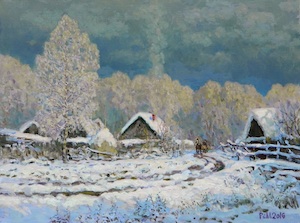
Realism!
It's 27 pages, and most of it is about various details regarding falling through snow or getting frostbite or dealing with snow blindness or whatever. These environmental hazards are all rigorously and realistically modeled in the 3rd edition D&D rules, and the outputs seem to do what they are expected to do.
Not that it mattered. Nobody ever used these goddamn things, and nor did they have any reasonable reason to do so. Maybe some of the planar attribute crap they stole from Manual of the Planes, but probably not even then. People don't like elemental survival RPGs, for all that they continue to be a depressingly common genre of adventure.
The problem is, one of the main conflicts is Man vs. Nature, and people get the idea in their heads that surviving blizzards and stuff is exciting and can add real drama to a game...but in D&D, you do not get XP for surviving an avalanche, much less avoiding setting one off in the first place.
Well, Snowflake Lichen are CR 3. Have fun with that.
Probably the most egregious failing of the 3rd edition D&D system is how things at higher level just stop making sense. The skill difficulty die rolls are only built for people who are 1st through 4th level. What are you going to do when it's mathematically impossible for the Ranger to fail a DC 18 Survival check? What are you gonna do when the Wizard just makes everyone magically immune to cold all fucking day?
This book doesn't have answers for that. There is some example magical frozen terrain features and some sample magic icy weather, and it doesn't mean shit at higher levels. Yes, if you don't have magical protection then if you go to the sky city of Ever Ice without protection from cold the lord of Chilblain is going to fucking give you Chilblains. And those are going to turn into frostbite and you're going to lose fingers and then your life. But who the fuck cares? By the time you're high enough level to care about a sky city made of ice none of that shit matters.
And on the flip side, the scope and size of high level bullshit just isn't there. Dire Winter makes an area of blizzard one thousand feet in radius. Which is less than four miles across and would take about two hours to simply walk around it. It lacks the scope and majesty you were probably expecting when the powerful wizard unleashed the Dire Winter at the end of his mighty ritual of vast power.
High level challenges just weren't math hammered the way low level challenges were. Never were. And in Frostburn, that is still extremely true.
There is no thematic unity to coldness in D&D. It probably should have been. There could have been a little bit of flavor text where somebody talks about how the first gods warred against the frost titans, or placed the sun in the sky to melt the eternal ice, or in some way gave some sense that ice represents the final fucking entropy of the universe for about 90% of the inhabitants of the D&D setting.
We don't get that. You go somewhere cold, it snows. Wear a fucking jacket. That is the D&D 3.5 philosophy.
Some of the magical terrain is straight goofy, and I suspect some of it is padding stuffed in from other projects. Like, why are there columns of ice that shoot lightning bolts at passerbys like fucking Tesla Coils? Like seriously, why?
Some of this crap looks straight AD&D-ish. Percentile tables for Everfrost Terrain features by category. Random patches of snow that casts dispel magic. Razor snow. Lists of poisons that include "Woolly Mammoth Eye Juice." Half of it could be placed, without change, in a Hackmaster supplement and nobody would know the difference.
The designers of 3rd edition were really into some pretty advanced math to calculate costs and shit. And while these mathematical actuary tables are internally consistent, and quite beautiful as math – they don't really produce good results. And nowhere is that more blatant than with poisons and traps. Those things cost way too much and their effects are incredibly underwhelming.
The poisons and traps here meticulously follow the official cost and effect guidelines, and because of that they are worthless. It wouldn't surprise me if getting all these numbers to fit with established protocol was the anal retentive nerd obsession that kept this book in development hell for so long. Like, would you like to pay fifty six pounds of gold for a deadfall trap that dumps 2 dice of damage worth of snow on people? No, obviously you would not. 56 pounds of gold is so much gold that you could just drop the coins on people and do similar damage. For fuck's sake!
And if the coins are cold, in a frostfell region they could do cold damage too.
One of the great stupidities of D&D 3.5 is that the Earth/Air/Fire/Water elemental opposition axis was unwieldily married to a Cold/Fire/Acid/Sonic/Electricity "energy" damage axis which managed to please absolutely nobody and led to some every strange concepts. In this case, you get "coldfire" which is supposed to be "pure cold energy" which...burns you. With frostburn damage. Which, by the great logic of this book, is something you can drown in, even if you are otherwise immune to cold.
Terrain features and dungeon features fill out the end of the chapter. It's a bit rambly and is a bit like your nerdy younger cousin listing all the things they made in Minecraft, but it has pretty good coverage.
But as a winter wonderland themed version of the Dungeon Master's Guide, this hits all the high notes in only 27 pages. It gives you worldbuilding, it gives you some terrain features. It gives you some furniture to make your frost goblin Sims homes with. And it makes me want to tell stories about adventurers exploring an old castle or city that has been claimed by the ice and is now crawling with monsters. Like the old gold box video game Secret of the Silver Blades.
Just for kicks, there is another type of magical coldfire called rimefire, which deals half cold and half fire damage. You might have expected rimefire to make an appearance in the next book in the series, which deals with it being too goddamned hot out, but in fact it is never mentioned anywhere ever again as far as I am aware. Because nobody cared.
Next up: Character Stuff.
This is where the book tries to sell itself to players rather than Dungeon Masters.
Warning: There are no magical shovels in this book.


